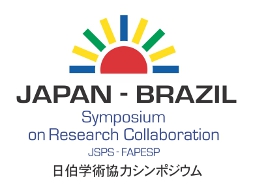Agricultural project by the region’s first immigrants produces social technologies in the Amazon
Evolution of the project for growing cacau, implemented in the 1930s by Japanese immigrants to the Amazon, gave rise to rural development alternatives in Brazil
By Fernando Cunha, in Tokyo
Agência FAPESP– Two decades after they arrived in Brazil, the first Japanese immigrants to the Amazon region, in a settlement 200 km south of Belém in the state of Pará, embarked on a project originally focused on growing cacau. It ultimately evolved into a sustainable and economically viable model for agroforestry practices in Brazil.
The experience was described at the Japan-Brazil Symposium on Research Collaboration, jointly organized by FAPESP and the Japan Society for the Promotion of Science (JSPS) at Rikkyo University March 15-16, with support from the Embassy of Brazil in Tokyo.
With a focus on productive economic activity, Masaaki Yamada, professor at the Tokyo University of Agriculture and Technology (TUAT), spoke about the development stages of an agricultural project initiated in the 1930s in Acará (now Tomé-Açu), to grow cacao, which over the course of 80 years, established a sustainable production model in that region.
“The project was suspended during the initial period of immigration, pre-World War II, due to the immigrants’ lack of knowledge about tropical agriculture techniques. But it started up again with the production of rice and horticulture at the initiative of just 200 of the 2,000 immigrants who survived malaria or who decided not to move to the big cities,” said Yamada.
At the end of the war, nearly 500 families began to grow black pepper on the settlement, the price of which increased on the world market as a result of conflicts in tropical Asia during that period. “The monoculture of black pepper became susceptible to global market fluctuations in the price of pepper and outbreaks of plant diseases in the decades that followed,” explained Yamada.
That is why in the early 1970s, under the coordination of the recently-established Tomé-Açu Multipurpose Agricultural Cooperative (CAMTA) and technical guidance by the Japan Emigration Service (predecessor to the Japan International Cooperation Agency - JICA) the farmers began to develop successive agroforestry systems, growing species with economic potential such as passion fruit, cacao and multipurpose tall tree species along with still productive pepper plants.
More diversified still in the following decade, CAMPTA began to grow other species of tropical fruits such as bananas and melons, built an experimental juice plant with a 50 ton freezer storage capacity, and established the Tomé-Açu Agroforestry System (SAFTA), an organization recognized for developing social production technologies.
“Since then, the cooperative has been able to expand plant capacity to its current 2,000 tons,” said Yamada.
According to the researcher, CAMTA, shakened by the period of Brazilian hyper-inflation and social conflict in the south of Pará, began to invest in the informal extension of agroforestry techniques to rural communities around the settlement. Recognized for their economically viable agroforestry practices, leaders of the cooperative began to be invited to provide technical assistance in several Brazilian states and neighboring countries.
Since 2001, Tokyo University of Agriculture and Technology has worked with CAMTA on projects financed by JICA to disseminate the use of social technologies developed in Tomé-Açu to rural communities subject to the technical and socioeconomic challenges of northeastern Pará. Today the cooperative offers project guidance and help to students through the Internet as well as collaboration through agreements with local institutions.







